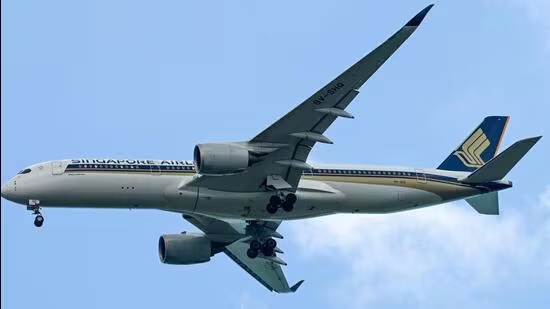Plane rides are getting bumpier due to climate change
NEW DELHI: The death of a person and injuries to at least 30 people on board a London-Singapore flight that encountered severe turbulence highlights an often-overlooked fallout of the climate crisis: a warming planet is increasing the incidence of air turbulence, particularly dangerous clear-air turbulence which goes completely undetected by radar systems.

Recent research has suggested that the skies that aircraft fly through are “bumpier today than four decades ago”, with a 55% increase in annual duration of turbulence over the North Atlantic — one of the world’s busiest routes — between 1979 and 2020.
Unlock exclusive access to the latest news on India's general elections, only on the HT App. Download Now! Download Now!Researchers have called for an urgent need for better investments in radar systems and forecasting for air travel, highlighting that emissions cuts are the way forward to keep the rise in global temperatures below 2°C above pre-industrial levels and ameliorate its overall impacts.
“Moderate turbulence increased by 37%, and light turbulence increased by 17% during this period. (Turbulence in) Other flight routes over the US, Europe, the Middle East, and the South Atlantic also significantly increased,” the research, Clear-air turbulence trends over the North Atlantic in high-resolution climate models, by a team of scientists from the University of Reading, UK, in 2023 said.
The scientists put this worrying trend down to greater wind shear in the jet stream.
Or more simply: changes in wind speed in the wind system blowing from west to east about 10km from the Earth’s surface. Typically, this change happens due to difference in temperature between the equator and the poles.
Turbulence is a disruption of airflow which causes the airplane to enter irregular vertical motion. It can occur due to atmospheric pressure, jet streams, flying over mountains or through storms or foggy conditions. But it’s the kind that occurs under clear skies that worries researchers who find this unpredictable clear-air turbulence invisible and hard to detect.
While severe turbulence is “still very rare”, it is projected to increase over time, Isabel Smith, a turbulence researcher at the University of Reading’s Department of Meteorology, said.
She added that the rising gap in temperature in polar regions as against those in the tropics, is the main contributor.
“This is because the upper atmosphere is warming faster in the tropics, as a result of greenhouse emissions, than in the polar regions. This greater difference in temperature between low and high latitudes increases wind shear in the jet streams, the high-level wind currents that blow 10km above our heads where planes fly, which in turn enhances the formation of turbulent patches of air,” Smith, the lead author of the study said.
While winter is the most turbulent season for flights, the scientist found that summers by 2050 may “become as turbulent as 1950 winters and autumns”
“For every 1°C of global near-surface warming, autumn, winter, spring, and summer are projected to have an average of 14%, 9%, 9%, and 14% more moderate clear-air turbulence,” the researchers found.
The researchers thus suggested investing in improved forecasting and detection systems.
“Following a decade of research showing that climate change will increase clear-air turbulence in the future, we now have evidence suggesting that the increase has already begun. We should be investing in improved turbulence forecasting and detection systems, to prevent the rougher air from translating into bumpier flights in the coming decades,” professor Paul Williams, an atmospheric scientist at the University of Reading who co-authored the study, said.
While aviation sector by itself is a major contributor to global emissions — in 2022 aviation accounted for 2% of global energy-related CO2 emissions, having grown faster in recent decades than rail, road or shipping according to IEA estimates — the rise in global temperatures poses other threats to the sector.
In a separate study, Climate Central in 2023 listed five ways climate crisis is disrupting air travel.
Runways at some major coastal airports are at risk from worsening floods (the Dubai floods last month are a classic example of the crisis); warmer air is less dense making it harder for planes to gather lift enough to take flight; with the potential for severe storms increasing, there is also a heightened risk of lightning strikes damaging electrical systems and equipment on aircraft; the shifting jet stream could translate into longer flights which in turn would increase fuel consumption; and the increase in clear air turbulence.
Disclaimer: The copyright of this article belongs to the original author. Reposting this article is solely for the purpose of information dissemination and does not constitute any investment advice. If there is any infringement, please contact us immediately. We will make corrections or deletions as necessary. Thank you.
Title:Plane rides are getting bumpier due to climate change
Url:https://www.investsfocus.com









